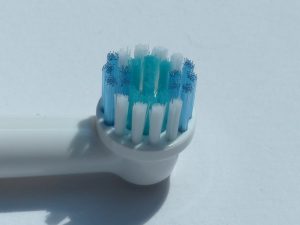Adoption of Digital Pathology, Ford Model T and Electric Toothbrushes
By Simon Häger, Product manager Sectra Digital Pathology
Many pathology labs are currently switching from glass-based reviews using a microscope, to a computer-based workflow for reviewing digital images. This transition is particularly strong in the Scandinavian countries and the Netherlands. It is highly likely that most labs throughout these regions will be completely digital within a few years.
However, changing clinical workflows and implementing new technologies in healthcare is complex. The inherent inertia of change has meant that many innovations have failed to reach patients in the care arena. While the drivers and benefits of adopting digital pathology are doubtless, there is a risk that their total value may not create enough momentum to overcome the barriers to digitize for some labs.
Drivers must exceed barriers
The main drivers of digital pathology adoption vary between countries and labs. They are usually linked to a more efficient workflow through digital case sharing, or to quality enhancements through image analysis and reduced glass loss. Since many healthcare systems are limited by heavy resource constraints, these benefits create true value for patients in terms of shorter lead times and more accurate diagnosis.
However, there are also barriers to the adoption of digital pathology. These include the issues of creating an attractive business case to justify the investment, legal barriers (US), cultural resistance and the inherent inertia of change within healthcare. Historically, the actual technology has hindered adoption due to poor viewers and scanners. But this barrier is diminishing, and there are today several examples of how high-performing digital pathology systems are being used for routine diagnosis.
 Who is responsible?
Who is responsible?
The responsibility for bringing the benefits of new technologies to patients lies with both the vendors of digital pathology systems, and with healthcare providers. All of these parties must work hard, lobby and stay innovative to enhance the drivers and simultaneously remove the barriers.
Looking back on other technological advancements, we see many success stories. But we also know about cases where new and beneficial technologies have failed to become mainstream because their barriers outweighed their benefits. There are also cases where new technologies have taken way too long time to benefit patients. For instance, according to the Swedish Government’s life sciences coordinator, Anders Lönnberg, it takes in average 17 years from a clinical validation study of a new medical technology until it reaches 80% of the patients in Sweden.
A parallel with electric toothbrushes
 An interesting parallel where the industry has failed to remove enough barriers to succeed with full-scale adoption, is the electric toothbrush. Electric toothbrushes were first introduced in the early 1950s, and there is now significant evidence of their superiority to manual toothbrushes in terms of both oral hygiene and time savings.
An interesting parallel where the industry has failed to remove enough barriers to succeed with full-scale adoption, is the electric toothbrush. Electric toothbrushes were first introduced in the early 1950s, and there is now significant evidence of their superiority to manual toothbrushes in terms of both oral hygiene and time savings.
Much has improved since their introduction, such as battery time, design and the standardization of replaceable brush heads. But after 60 years of development and billions of marketing dollars, most people still use a manual toothbrush. Vendors have failed to remove some of the critical barriers to reaching a tipping point for electric toothbrushes to become mainstream. These barriers probably include:
• The difficulty of measuring the benefits
• Poor usability: ugly, noisy, and unhandy to keep
• Manual toothbrushes are “good enough”
• Cost exceeds their perceived value
• Poor awareness of their benefits
It is all about disruption
In order to change how pathology diagnosis is performed, it is not enough to simply introduce a new technology that can improve existing practices. The efficiency, time and quality enhancements must be so significant and disruptive that they clearly exceed the barriers.
One of the main reasons why electric toothbrushes have not become mainstream is because their perceived value is not greater than their cost. The adoption of digital pathology could disrupt the entire cancer care apparatus, but if the value is not proven or properly communicated, the cost will be perceived as too high. Some labs refer to this as an “insufficiently attractive business case”.
Most people would agree that the first automobile was disruptive. But people laughed when the first car appeared, and it posed no significant threat to horse and buggy. It was not until Henry Ford introduced the Ford Model T that the car become mainstream.
The Model T was mass-produced, which lowered the price and increased the quality and reliability to a level where the benefits outweighed the costs. This brought adoption to a tipping point, and the car became mainstream. While traveling by horse was still cheaper, the convenience, reliance and speed of traveling by car outweighed the cost.
How to prevent digital pathology from suffering the same fate as electric toothbrushes
Since the performance of many scanners, image management systems and viewers today is high enough to handle a routine workflow, technology is no longer the barrier it used to be. Resistance to change is also lower as the healthcare sector becomes more accustomed to using digital technologies. Even the regulatory environment in the US seems to be easing with the first De Novo 510(k) application submitted to the FDA.
With diminishing barriers, the drivers of digital pathology are increasing as the functionality steadily improves. One example is image analysis for PD-L1 testing, where an atomization of the test would significantly reduce the treatment error rate, free up pathologists’ time and lower the costs of cancer care. It is a well-known issue that the wide variability of manual PD-L1 testing is expensive, since patients who test negative are still treated with expensive immunotherapy even when traditional chemo treatment would produce a better treatment outcome.
Adding the additional benefits of digital pathology, while also working to reduce the adoption barriers, will bring us closer to the point where benefits exceed the costs. Henry Ford did it, but the electric toothbrush is still struggling—for example by adding questionable features such as ultrasound to detect caries, and connectivity with mobile apps. In Scandinavia and the Netherlands, the benefits of digital pathology are overcoming the barriers and driving adoption forward. Given the rapid development of digital pathology and increased evidence of its benefits, it is my firm belief that the tipping point will soon be reached throughout the rest of the Western world. And who knows, maybe the electric toothbrush will also become mainstream one day. *
*For the record, I do not personally use an electric toothbrush, but have reached the point where I am considering one because of peer pressure.
































